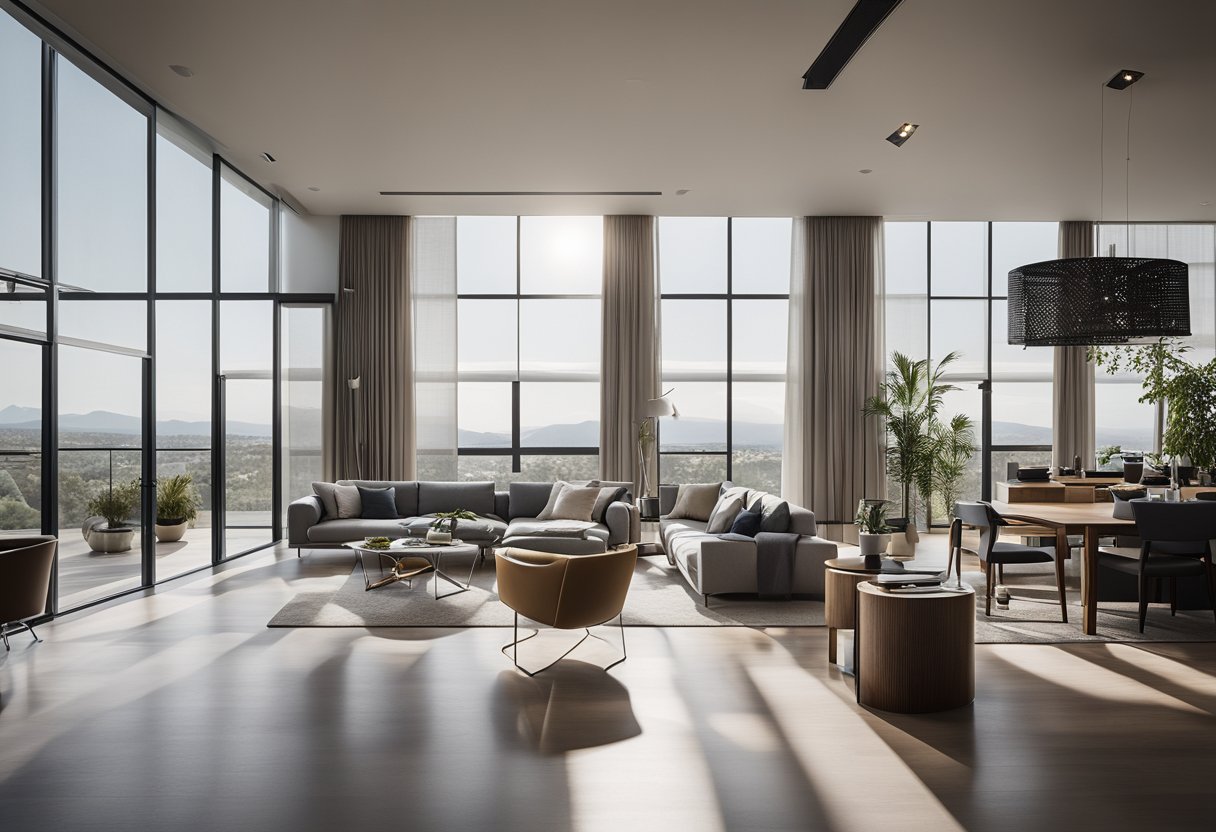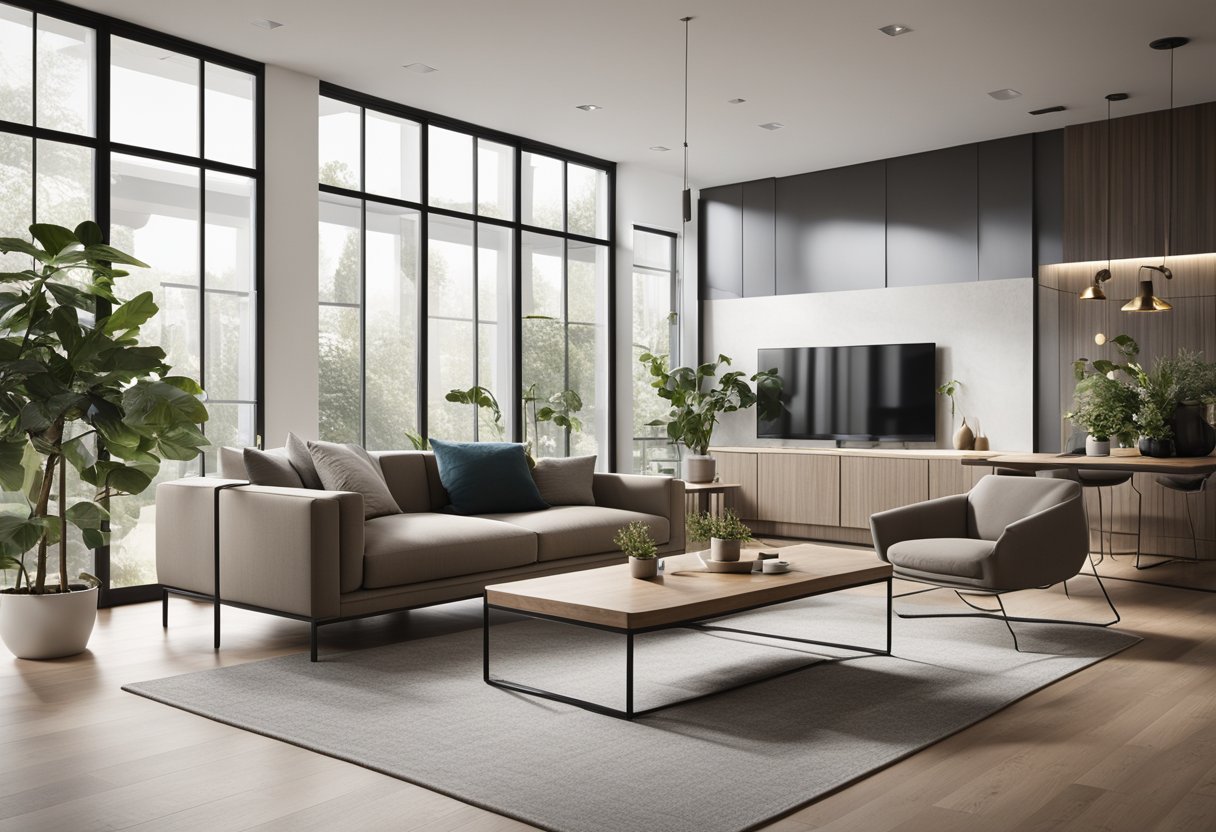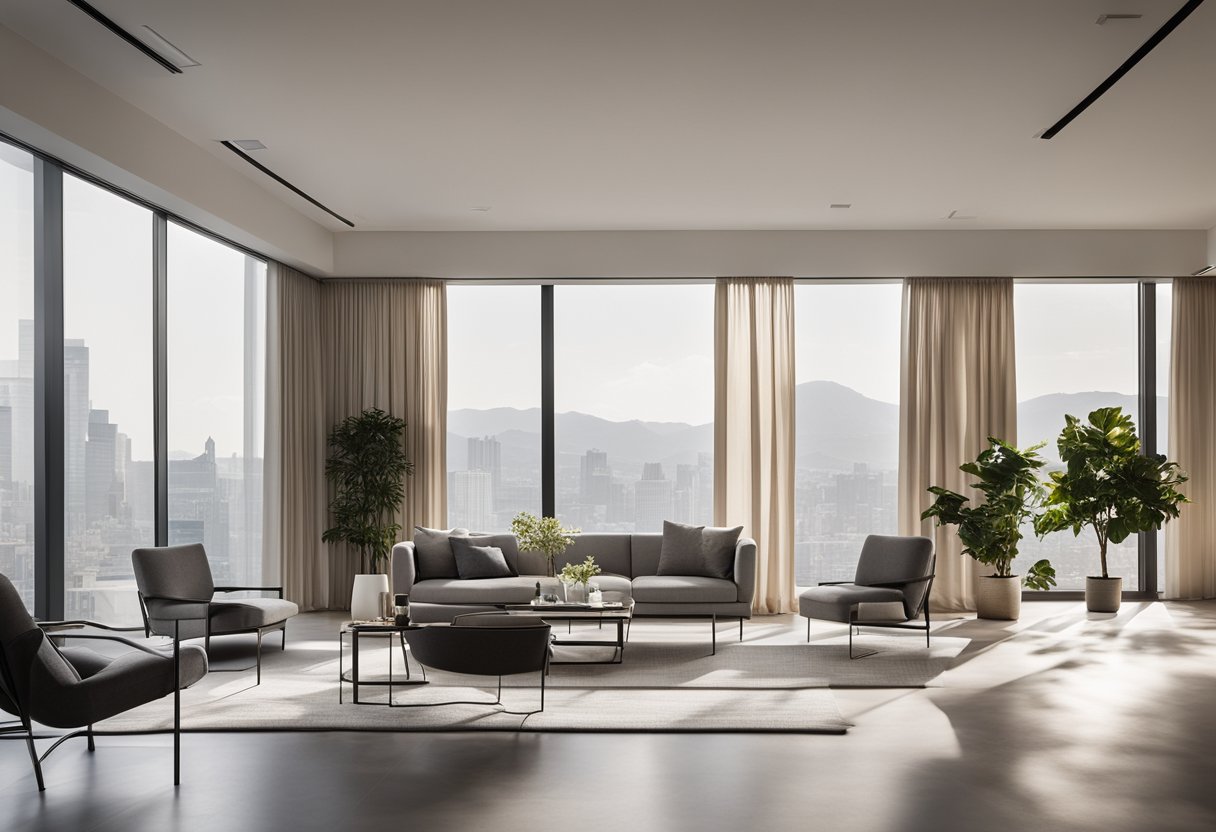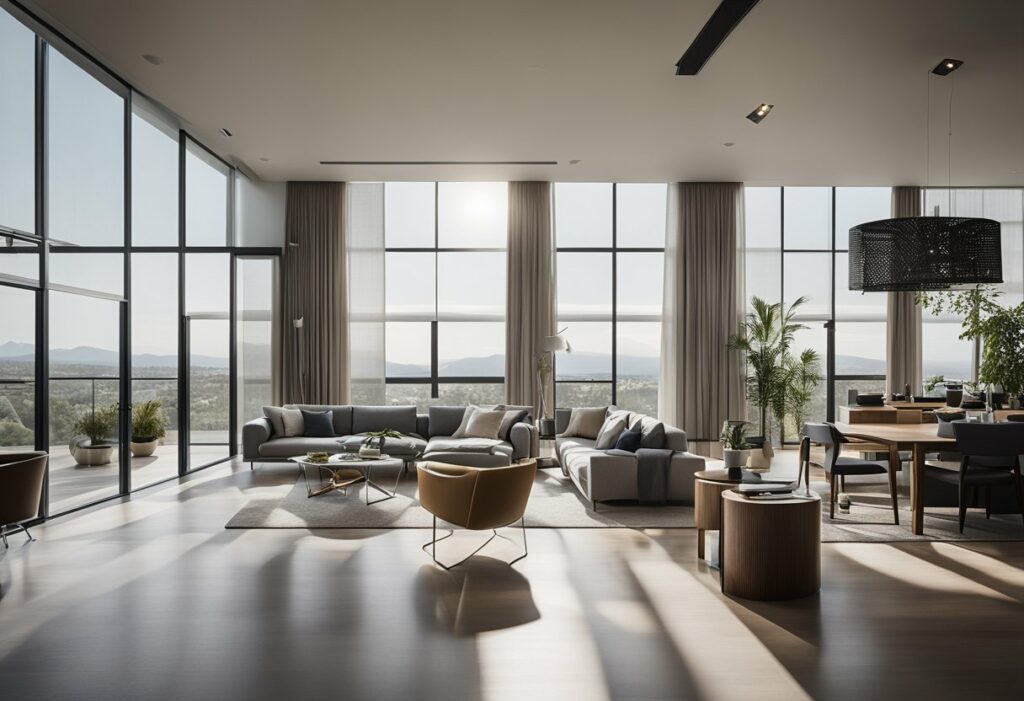Modern Architecture Interior Design: Transforming Spaces for the Future
Modern architecture interior design is a style that emerged in the early 20th century and has continued to evolve ever since. It is characterised by clean lines, minimalism, and an emphasis on functionality. The style is often associated with modernism, a cultural movement that rejected traditional forms and embraced new technologies and materials.

One of the fundamentals of modern interior design is simplicity. The design is centred on the idea that less is more. The idea is to create a space that is uncluttered and free from unnecessary ornamentation. The focus is on the essentials, such as light, space, and form. Modernism also emphasises the use of new materials and technologies, such as concrete, glass, and steel, which allow for new forms and structures.
Elements and aesthetics of modern interiors include a focus on geometric shapes, asymmetry, and a neutral colour palette. The use of natural materials, such as wood and stone, is also common. The goal is to create a space that is both functional and aesthetically pleasing. By combining form and function, modern interior design creates spaces that are both beautiful and practical.
Key Takeaways
- Modern architecture interior design emphasises simplicity, functionality, and the use of new materials and technologies.
- The style is characterised by clean lines, minimalism, and a focus on the essentials.
- Elements and aesthetics of modern interiors include geometric shapes, asymmetry, natural materials, and a neutral colour palette.
Fundamentals of Modern Interior Design

If you’re interested in modern interior design, it’s important to understand the historical evolution, defining characteristics, and influential designers and architects that have shaped this style. Here’s a brief overview of the fundamentals of modern interior design.
Historical Evolution
Modern interior design emerged in the early to mid-twentieth century, as a response to the ornate and elaborate styles that dominated the late nineteenth century. This movement was characterized by clean lines, simple forms, and a focus on function over ornamentation. Designers and architects like Charles and Ray Eames, Mies van der Rohe, and Herman Miller helped to popularize this style, which quickly became a hallmark of the mid-century modern era.
Defining Characteristics
Modern interior design is characterized by a number of defining features. These include a focus on simplicity and minimalism, the use of natural materials like wood and stone, and a preference for neutral color palettes. Furniture and decor in this style often feature clean, geometric lines and simple, unadorned shapes. Lighting is also an important element of modern interior design, with a focus on natural light and the use of fixtures that are both functional and aesthetically pleasing.
Influential Designers and Architects
Several designers and architects have been particularly influential in shaping the modern interior design movement. Charles and Ray Eames are perhaps the most well-known of these, with their iconic furniture designs and innovative use of materials. Mies van der Rohe, who famously declared that “less is more,” was another important figure in the modernist movement. Herman Miller, a furniture company that worked closely with many of these designers, also played a significant role in popularizing the modern interior design style.
Overall, modern interior design is a style that emphasizes simplicity, functionality, and a focus on the essentials. By understanding the historical evolution, defining characteristics, and influential designers and architects of this movement, you can gain a deeper appreciation for this timeless style.
Elements and Aesthetics of Modern Interiors

If you are looking to create a modern interior design, there are several key elements and aesthetics that you should consider. These elements and aesthetics are what make modern interiors stand out and give them their unique look and feel.
Colour and Contrast
One of the most important aspects of modern interior design is the use of colour and contrast. Modern interiors often use a neutral palette of whites, blacks, and greys, with pops of colour used sparingly to create a focal point. The contrast between light and dark colours can be used to create depth and interest in a space.
Furniture and Accessories
Furniture and accessories play a crucial role in modern interior design. Clean lines and minimalist design are key features of modern furniture, with vintage pieces and industrial materials also being popular. Accessories should be kept to a minimum, with each piece carefully chosen to complement the overall aesthetic of the space.
Materials and Textures
Natural materials and textures are a hallmark of modern interior design. Wood, stone, and metal are often used to create a grounded aesthetic, with finishes that are both matte and glossy. Geometric shapes and natural textures can be used to add interest to a space.
Lighting and Spatial Dynamics
Lighting is an essential element of modern interior design, with natural light being favoured wherever possible. Large windows are often used to bring in as much light as possible, while lighting fixtures are carefully chosen to complement the overall aesthetic of the space. Spatial dynamics are also important, with open-plan layouts and minimalist interiors being popular.
Overall, modern interior design is characterised by its clean lines, natural elements, and neutral palettes. By carefully selecting furniture, accessories, and materials, you can create a timeless and stylish space that reflects your personal taste and style.
Frequently Asked Questions

How can I infuse modern aesthetics into my home’s interior design?
To infuse modern aesthetics into your home’s interior design, you can start by incorporating clean lines, minimalism, and neutral colours. Consider adding modern furniture pieces, such as a sleek sofa or a statement chair, to your living room. You can also experiment with different textures, such as metal and glass, to add a touch of modernity to your decor.
What are the defining characteristics of a contemporary modern interior?
A contemporary modern interior is characterized by clean lines, minimalism, and a focus on functionality. It often features neutral colours, such as white, grey, and beige, and incorporates natural materials, such as wood and stone. Contemporary modern interiors also prioritize natural light and open spaces, with an emphasis on simplicity and uncluttered spaces.
In what ways can a small house embrace modern interior design effectively?
Small houses can embrace modern interior design effectively by maximizing space and incorporating multifunctional furniture. Consider using built-in storage solutions, such as floor-to-ceiling bookshelves, to create more storage space. You can also use light colours and mirrors to create an illusion of spaciousness. Choose furniture pieces that serve multiple purposes, such as a sofa bed or a coffee table with hidden storage.
What innovative materials are trending in modern interior architecture?
Innovative materials that are trending in modern interior architecture include sustainable materials, such as bamboo and recycled plastic, and smart materials, such as self-healing concrete and energy-generating glass. These materials not only add an element of modernity to your home’s interior design but also contribute to sustainability and energy efficiency.
How do modern design principles influence the layout of a house?
Modern design principles influence the layout of a house by prioritizing open spaces, natural light, and functionality. Modern interior design often involves removing walls and barriers to create a more open and fluid space. It also emphasizes the use of natural light, with large windows and skylights, to create a bright and airy atmosphere. Functionality is also a key consideration, with a focus on creating practical living spaces that serve multiple purposes.
Could you suggest some exciting modern interior design themes for new homes?
Some exciting modern interior design themes for new homes include industrial chic, Scandinavian minimalism, and bohemian eclectic. Industrial chic incorporates raw materials, such as exposed brick and metal, with sleek and modern finishes. Scandinavian minimalism emphasizes simplicity, with a focus on light colours and natural materials. Bohemian eclectic is characterized by a mix of textures, patterns, and colours, with a focus on creating a cozy and inviting atmosphere.



